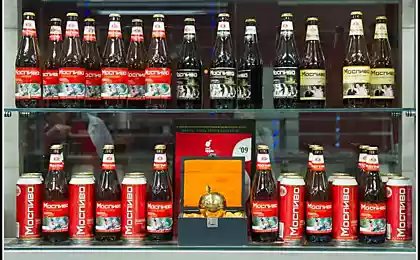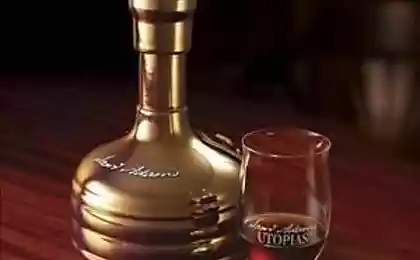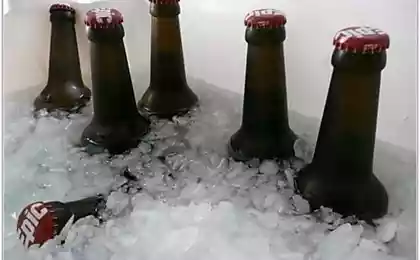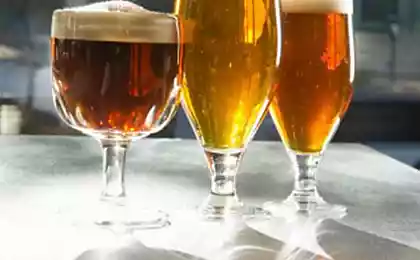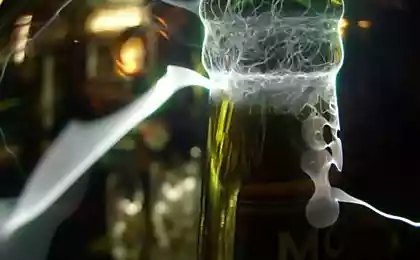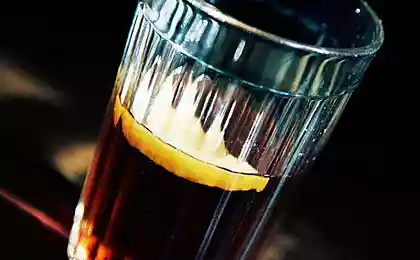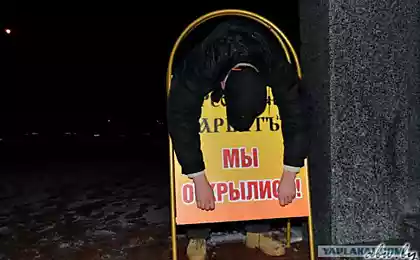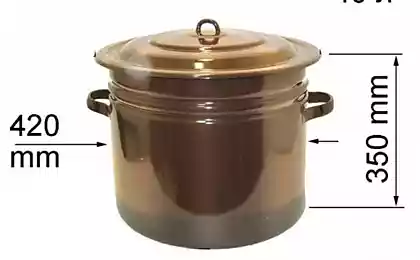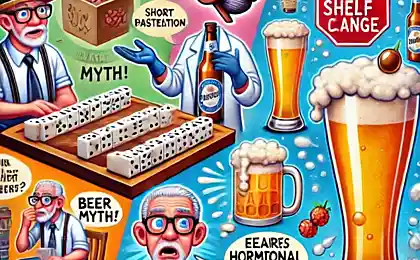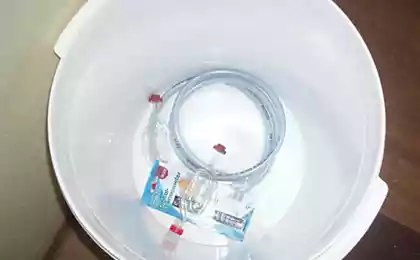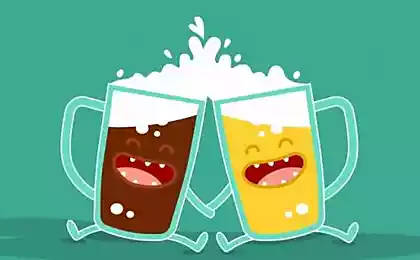1093
Netherlands. Monks and beer
I brought this July in Holland. No, not in Amsterdam in order to enjoy the lust of debauchery and lust, Nakuru vusmert and gawk at the most authentic street red light. The interest in this country is quite ordinary to me. Well, what we know about the Netherlands? Mills. Tulips. Wooden shoes. Kurishka in "coffee shops." Sweets and pastries. Quite a large port in Europe. The country in which the cyclist is valued more pedestrian ... That's basically all we heard in one word, Holland. I did some research among their physical and virtual friends, which is associated with the word Holland and Amsterdam. All that was associated, I cited above. And no man was not a single word about Bavaria! Yes Dutch Bavaria. Bavaria is not the German and Dutch, and it's quite an interesting moment in the history of this country. Many years of litigation between the Netherlands and Germany, who owns the brand Bavaria. Although today we are not talking about Bavaria. In it I have yet to go. Today we find ourselves in a bit durugyu history. This visit one of the seven trapistskih breweries. But before we continue, I would like that you would have plunged into a little story here, which will be discussed. And as always, we will help the music, try to feel what I'm going to tell you.
La Trappe - the only Dutch beer katergorii trapistov. The beer, which is brewed in the monastery and the monks brewed. In the world there are only seven Trappist breweries. Six of them are in Belgium, and the seventh - is La Trappe.
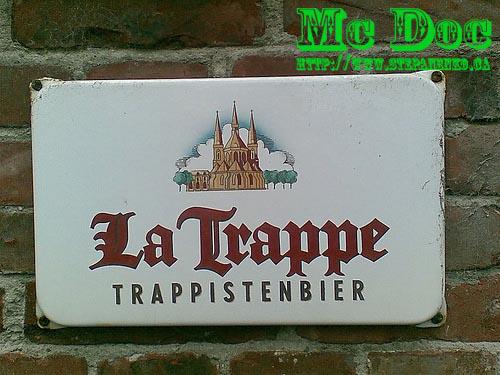
The tradition of brewing in the monasteries since ancient times existed in the countries of Catholic culture and Orthodox. Beer or wine (depending largely on the climate) during eating drinking instead of ordinary water. Sometimes it replaced beer and bread. Trappists held very strict monastic charter. Along with the many hours of daily prayer, the monks should do the hard work on the land within the walls of the monastery, eat very simple food, wearing ascetic clothes and refrain from any contacts with the outside world. However, brewing was still an integral part of monastic life. Perhaps the fact that the tradition of brewing since taken root in this Order, associated with the refusal of the Trappist meat. Beer made monks diet, eat only vegetables and cheese, more fulfilling. In addition, this drink to quench their thirst was much safer than drinking water from open wells and other sources. How many centuries ago, in the process of brewing monks strictly follow a set of rules. First, the beer is brewed in the monastery under the supervision of the monks themselves. Second, most of the income goes to charity and the maintenance of the monastery. The sale of beer I've seen only in monasteries. Although, in grocery stores so you can find this beer, but in very limited quantities. Just beer sold in kegs, below are photos.
So what are all the same brand of beer, are Trapiskim? Here they are:
- Achel - (Belgium)
- Chimay - (Belgium)
- Orval - (Belgium)
- Rochefort - (Belgium)
- Westmalle - (Belgium)
- Westvleteren - (Belgium)
- La Trappe - (Netherlands or Holland)
Once upon a time, as in other things for our time, beer was brewed in monasteries solely to support the monastery - as products and export restrictions. Thus the brewery is not considered a commercial organization. However, today belongs to La Trappe "Bavaria" and because of this even lost its status as trappist for a while. Dutch lawyers, however, Snack agreed with the Belgian brewers guild trapistov status and brought back in 2005. Status trapistov is of great importance, not least because of the fact that it is unique in its way. For comparison, the beer category abbey, which, although they are the names of the monastery, but the monks do not cook, and of which there are more than 50, if not 100. Thus, the truth can be known reformulated as: "There is no such abbey, who does not dream to become a "trapistov» ».
The monastery, which is brewed beer, called Onze Lieve Vrouw van Koningshoeven and is located in the Dutch province of Limburg, near the city of Tilburg. Near the monastery there is a bus stop, so get to the monastery will not be difficult. Coming at a railway station of the city of Tilburg, turn to the right, and from any direction asking avtobusniki La Trappe. Bus to go 1 time per hour, which is extremely convenient. Ticket if I remember correctly is worth 3, 50 for the whole day or, about 2, 40 euro one way. Since started a little rain, and the wait was not very exciting, we took a taxi. Taxis cost about 12 euros. Well, let him, the main thing is not waiting for the bus 40 minutes.
Service entrance to the monastery. For us, the entrance through the other gate, directly to shops and restaurants.
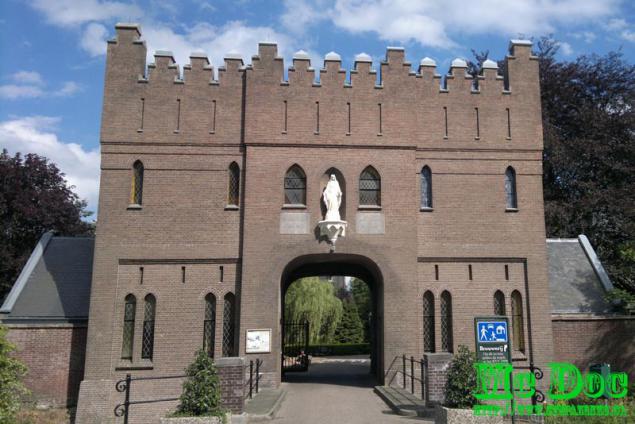
Entrance to the brewery of the monastery.
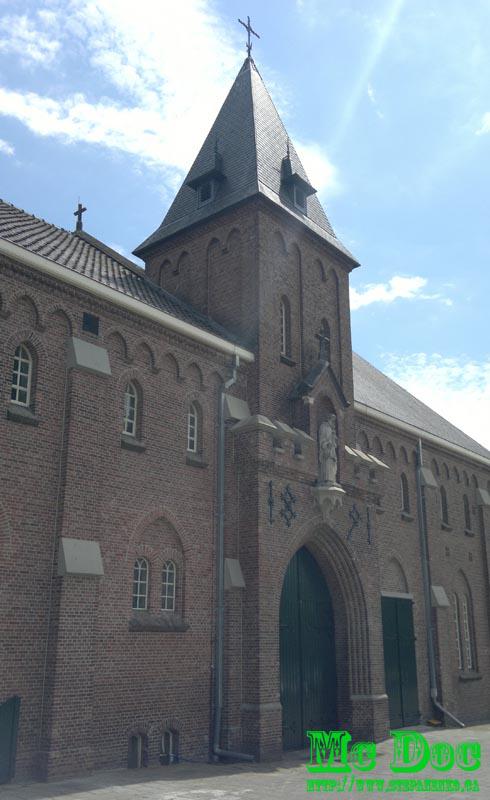
The statue of St. Isidore, patron saint of the monastery.

If you have tunately visit not only the store and restaurant, not only to enjoy a beer, then you have to wait up to 13 hours. Only this time the tour starts in the brewery itself. More precisely, as such excursions not if people typed if tourists will come - then will tour the brewery. We did not know this and cornered at 11 o'clock. I had to sit in the cozy restaurant, or rather outside at a table and enjoy a beer. The cost of the tour, like 10 euros. I do not remember exactly. For children do not have the money, just do not pay attention to them. After the tour, everyone sightseers poured glass of beer (by his choice), children got soda.
The restaurant, covered with real straw. On the street a lot of tables, you can sit down and have a beer, but if hungry, eat.

If you do not want to sit and drink a beer, you can stroll through the territory of the monastery park. View as growing hops. Monks him as yourself grow.
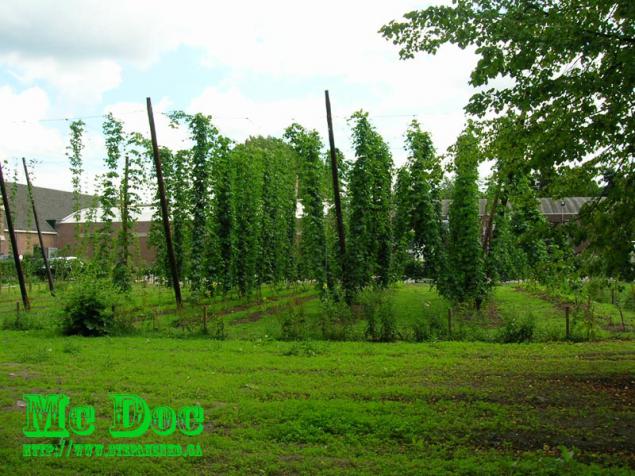
Visit the small chapel of St. Anne ...
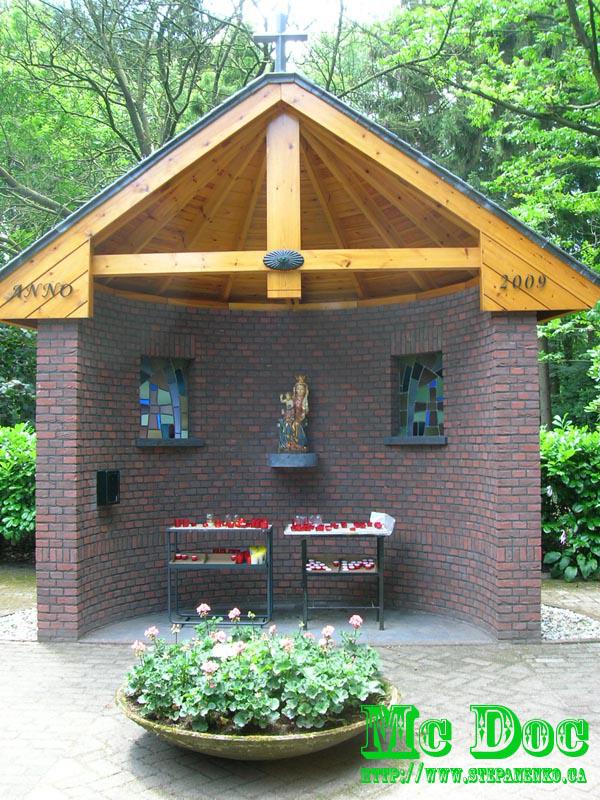
Formulation trapistov brewing beer, of course, though, differs from the usual preparation of beer. I can not be entirely accurate, as the tour was conducted in the Dutch language, but sometimes some parts of the tour we were translated into English and German (which they pretty lame). But I will write something that promptly inserted into the notebook. The process of cooking takes 5 weeks, but then recommend to the foundations of beer for about six months, since the process of bottle fermentation - is an integral component of the recipe. Ingredients of beer same barley (malt), hops, yeast and water. In the first stage, barley is filled with water from the province of Limburg. Another water is not used. Then this mixture is ground in a huge steel vat at a temperature of about 20 degrees Celsius. Malt in the mash vat stand with different number of breaks (brewers will understand me). Really achieve any sort of as a pause - learn failed. The secret. I also could not get the name of hops that is used Monks. All my questions answered me the plan secret. Two days later, the resulting mash can be used for brewing beer. From the selected temperature will depend on the color of beer. La Trappe trappist exists in four versions: Blond, Dubbel, Tripel, Quadruppel. Further to the mixed malt and hops beer yeast and left to ferment for 2 to 4 weeks, then again at a high temperature. 2-week beer is Blondie, a 4-week - kvadrupelem. At this stage, the beer can be added additional ingridiety: in triple add coriander, and adding sugar to kvadrupel povyshenyae fortress. This all the information I could get from the guide, as well as from one of the monks. For authenticity can not vouch !!! Well walk through the brewery and the brewery courtyard.
Entrance to the brewhouse.
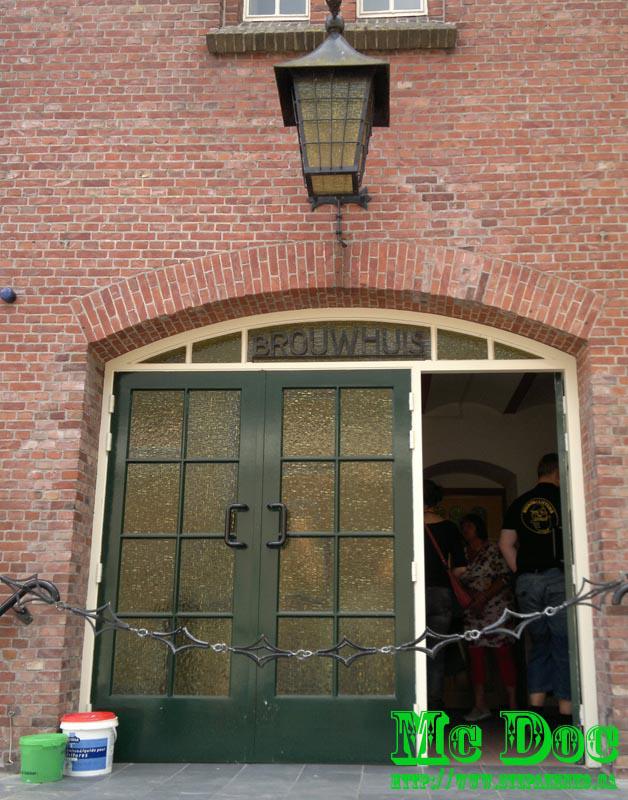
Mashing and cooking vats.
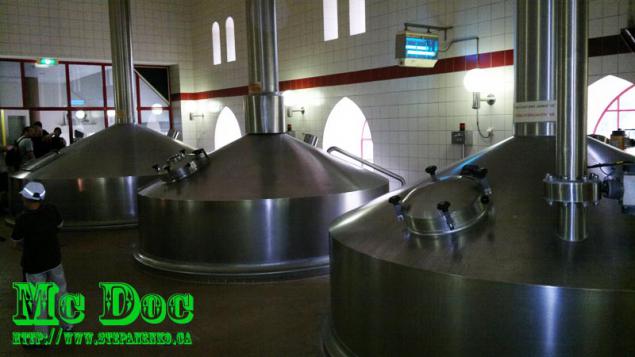
Mosaic life shows Trapiskogo Monk: Prayer, baking bread, work in the garden (the field), Manufacture of beer.

What struck me in my monastery, it is the fact that the monks baked bread. What is there so surprising you ask. I ate the bread. Delicious, unusual. So. A waste product of the beer production is the spent grain, the grain is used in the preparation of beer. Pellet is collected in a special container, and the monks use it in the preparation of bread. I was shocked. The fact that we throw out the Brewers, Monks use and make this bread!
Collection of grains.
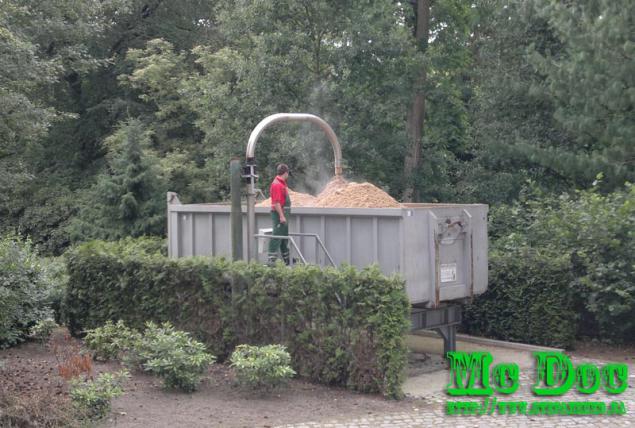
The old stove, monks rarely use it. On the right from the stove to the machine that prints the figure cookies.
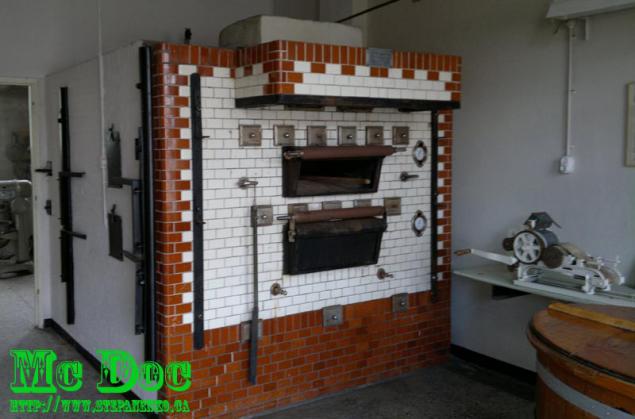
Something like the old dozatorskoy slicing machines test. There were no signs in English.
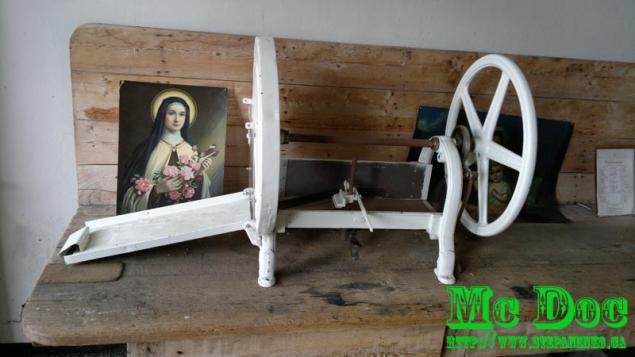
So Trapiskie monks engaged in manufacturing not only beer but also hleba.No time to look into the shop. See a lot we could not, production still. We were allowed to look at a couple of shops. The shop of finished products and to walk on Monastyrski yard. It turned out that only 18 Friars Monastery lives. At that time it was from the 16, two were on vacation. In the production of beer, the restaurant used hired labor, that is work there is not only the monks. The brewery operates 5 salaried workers. How much work yet, and could not figure out. If you want to visit the church, then it will not be possible. Only monks and those who decide to share their lives with the monks, can visit the church. The monastery can stay the night, or rather spend one day with the monks, in prayer, in work for their meals.
Workshop finished product, bottled beer.
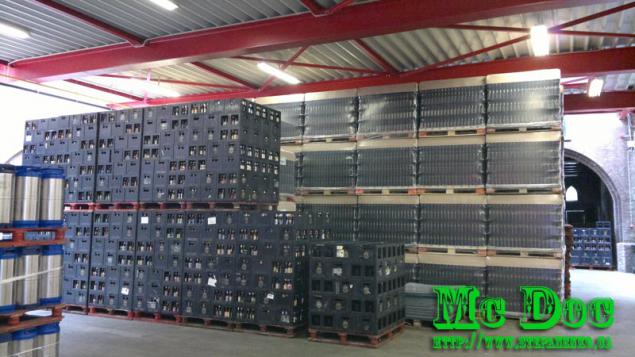
The same shop. Visible filling machines and beer packaged in kegs.
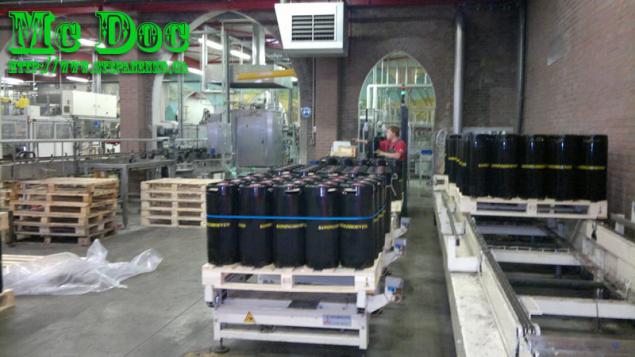
The monastery courtyard.
So I visited Trapistskih Monks. Trapistskogo drank beer, sex, bread, bought the entire line that will show in their theme of "My collection of beer." There I will show all the beer, which is made of a monk. His entire 8-NIL. And finally ...
Originally published here - www.hookahpro.ru/index.php?app=blog...13&showentry=49
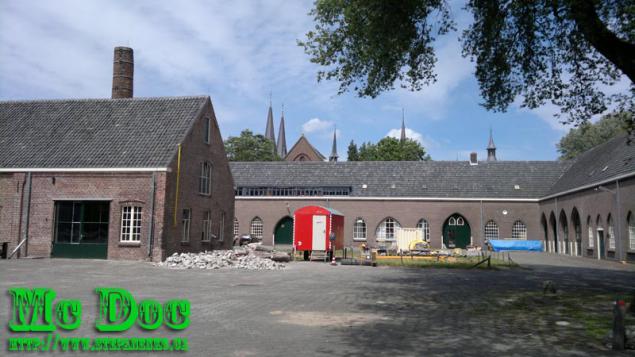
Source:
La Trappe - the only Dutch beer katergorii trapistov. The beer, which is brewed in the monastery and the monks brewed. In the world there are only seven Trappist breweries. Six of them are in Belgium, and the seventh - is La Trappe.

The tradition of brewing in the monasteries since ancient times existed in the countries of Catholic culture and Orthodox. Beer or wine (depending largely on the climate) during eating drinking instead of ordinary water. Sometimes it replaced beer and bread. Trappists held very strict monastic charter. Along with the many hours of daily prayer, the monks should do the hard work on the land within the walls of the monastery, eat very simple food, wearing ascetic clothes and refrain from any contacts with the outside world. However, brewing was still an integral part of monastic life. Perhaps the fact that the tradition of brewing since taken root in this Order, associated with the refusal of the Trappist meat. Beer made monks diet, eat only vegetables and cheese, more fulfilling. In addition, this drink to quench their thirst was much safer than drinking water from open wells and other sources. How many centuries ago, in the process of brewing monks strictly follow a set of rules. First, the beer is brewed in the monastery under the supervision of the monks themselves. Second, most of the income goes to charity and the maintenance of the monastery. The sale of beer I've seen only in monasteries. Although, in grocery stores so you can find this beer, but in very limited quantities. Just beer sold in kegs, below are photos.
So what are all the same brand of beer, are Trapiskim? Here they are:
- Achel - (Belgium)
- Chimay - (Belgium)
- Orval - (Belgium)
- Rochefort - (Belgium)
- Westmalle - (Belgium)
- Westvleteren - (Belgium)
- La Trappe - (Netherlands or Holland)
Once upon a time, as in other things for our time, beer was brewed in monasteries solely to support the monastery - as products and export restrictions. Thus the brewery is not considered a commercial organization. However, today belongs to La Trappe "Bavaria" and because of this even lost its status as trappist for a while. Dutch lawyers, however, Snack agreed with the Belgian brewers guild trapistov status and brought back in 2005. Status trapistov is of great importance, not least because of the fact that it is unique in its way. For comparison, the beer category abbey, which, although they are the names of the monastery, but the monks do not cook, and of which there are more than 50, if not 100. Thus, the truth can be known reformulated as: "There is no such abbey, who does not dream to become a "trapistov» ».
The monastery, which is brewed beer, called Onze Lieve Vrouw van Koningshoeven and is located in the Dutch province of Limburg, near the city of Tilburg. Near the monastery there is a bus stop, so get to the monastery will not be difficult. Coming at a railway station of the city of Tilburg, turn to the right, and from any direction asking avtobusniki La Trappe. Bus to go 1 time per hour, which is extremely convenient. Ticket if I remember correctly is worth 3, 50 for the whole day or, about 2, 40 euro one way. Since started a little rain, and the wait was not very exciting, we took a taxi. Taxis cost about 12 euros. Well, let him, the main thing is not waiting for the bus 40 minutes.
Service entrance to the monastery. For us, the entrance through the other gate, directly to shops and restaurants.

Entrance to the brewery of the monastery.

The statue of St. Isidore, patron saint of the monastery.

If you have tunately visit not only the store and restaurant, not only to enjoy a beer, then you have to wait up to 13 hours. Only this time the tour starts in the brewery itself. More precisely, as such excursions not if people typed if tourists will come - then will tour the brewery. We did not know this and cornered at 11 o'clock. I had to sit in the cozy restaurant, or rather outside at a table and enjoy a beer. The cost of the tour, like 10 euros. I do not remember exactly. For children do not have the money, just do not pay attention to them. After the tour, everyone sightseers poured glass of beer (by his choice), children got soda.
The restaurant, covered with real straw. On the street a lot of tables, you can sit down and have a beer, but if hungry, eat.

If you do not want to sit and drink a beer, you can stroll through the territory of the monastery park. View as growing hops. Monks him as yourself grow.

Visit the small chapel of St. Anne ...

Formulation trapistov brewing beer, of course, though, differs from the usual preparation of beer. I can not be entirely accurate, as the tour was conducted in the Dutch language, but sometimes some parts of the tour we were translated into English and German (which they pretty lame). But I will write something that promptly inserted into the notebook. The process of cooking takes 5 weeks, but then recommend to the foundations of beer for about six months, since the process of bottle fermentation - is an integral component of the recipe. Ingredients of beer same barley (malt), hops, yeast and water. In the first stage, barley is filled with water from the province of Limburg. Another water is not used. Then this mixture is ground in a huge steel vat at a temperature of about 20 degrees Celsius. Malt in the mash vat stand with different number of breaks (brewers will understand me). Really achieve any sort of as a pause - learn failed. The secret. I also could not get the name of hops that is used Monks. All my questions answered me the plan secret. Two days later, the resulting mash can be used for brewing beer. From the selected temperature will depend on the color of beer. La Trappe trappist exists in four versions: Blond, Dubbel, Tripel, Quadruppel. Further to the mixed malt and hops beer yeast and left to ferment for 2 to 4 weeks, then again at a high temperature. 2-week beer is Blondie, a 4-week - kvadrupelem. At this stage, the beer can be added additional ingridiety: in triple add coriander, and adding sugar to kvadrupel povyshenyae fortress. This all the information I could get from the guide, as well as from one of the monks. For authenticity can not vouch !!! Well walk through the brewery and the brewery courtyard.
Entrance to the brewhouse.

Mashing and cooking vats.

Mosaic life shows Trapiskogo Monk: Prayer, baking bread, work in the garden (the field), Manufacture of beer.

What struck me in my monastery, it is the fact that the monks baked bread. What is there so surprising you ask. I ate the bread. Delicious, unusual. So. A waste product of the beer production is the spent grain, the grain is used in the preparation of beer. Pellet is collected in a special container, and the monks use it in the preparation of bread. I was shocked. The fact that we throw out the Brewers, Monks use and make this bread!
Collection of grains.

The old stove, monks rarely use it. On the right from the stove to the machine that prints the figure cookies.

Something like the old dozatorskoy slicing machines test. There were no signs in English.

So Trapiskie monks engaged in manufacturing not only beer but also hleba.No time to look into the shop. See a lot we could not, production still. We were allowed to look at a couple of shops. The shop of finished products and to walk on Monastyrski yard. It turned out that only 18 Friars Monastery lives. At that time it was from the 16, two were on vacation. In the production of beer, the restaurant used hired labor, that is work there is not only the monks. The brewery operates 5 salaried workers. How much work yet, and could not figure out. If you want to visit the church, then it will not be possible. Only monks and those who decide to share their lives with the monks, can visit the church. The monastery can stay the night, or rather spend one day with the monks, in prayer, in work for their meals.
Workshop finished product, bottled beer.

The same shop. Visible filling machines and beer packaged in kegs.

The monastery courtyard.
So I visited Trapistskih Monks. Trapistskogo drank beer, sex, bread, bought the entire line that will show in their theme of "My collection of beer." There I will show all the beer, which is made of a monk. His entire 8-NIL. And finally ...
Originally published here - www.hookahpro.ru/index.php?app=blog...13&showentry=49

Source:

